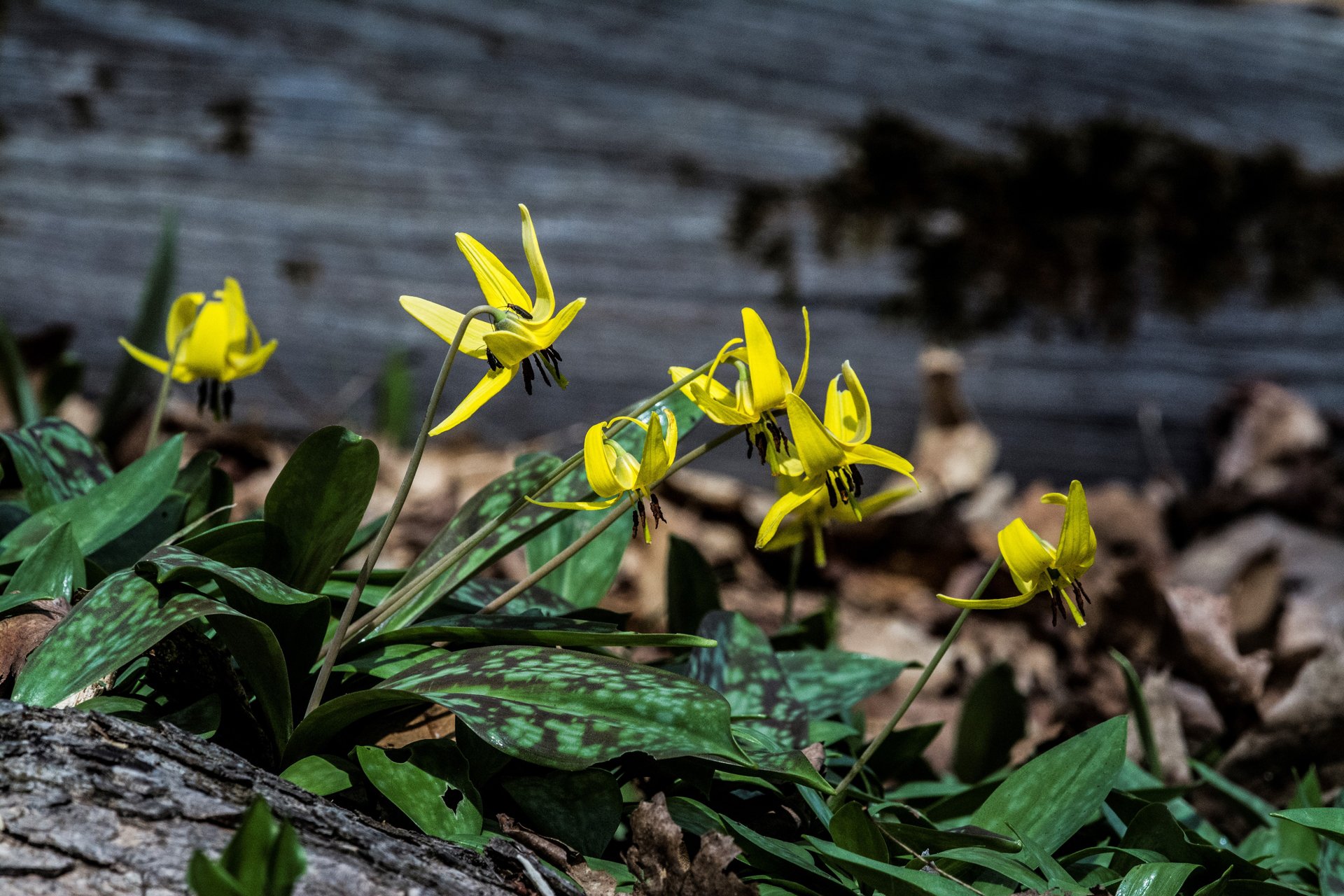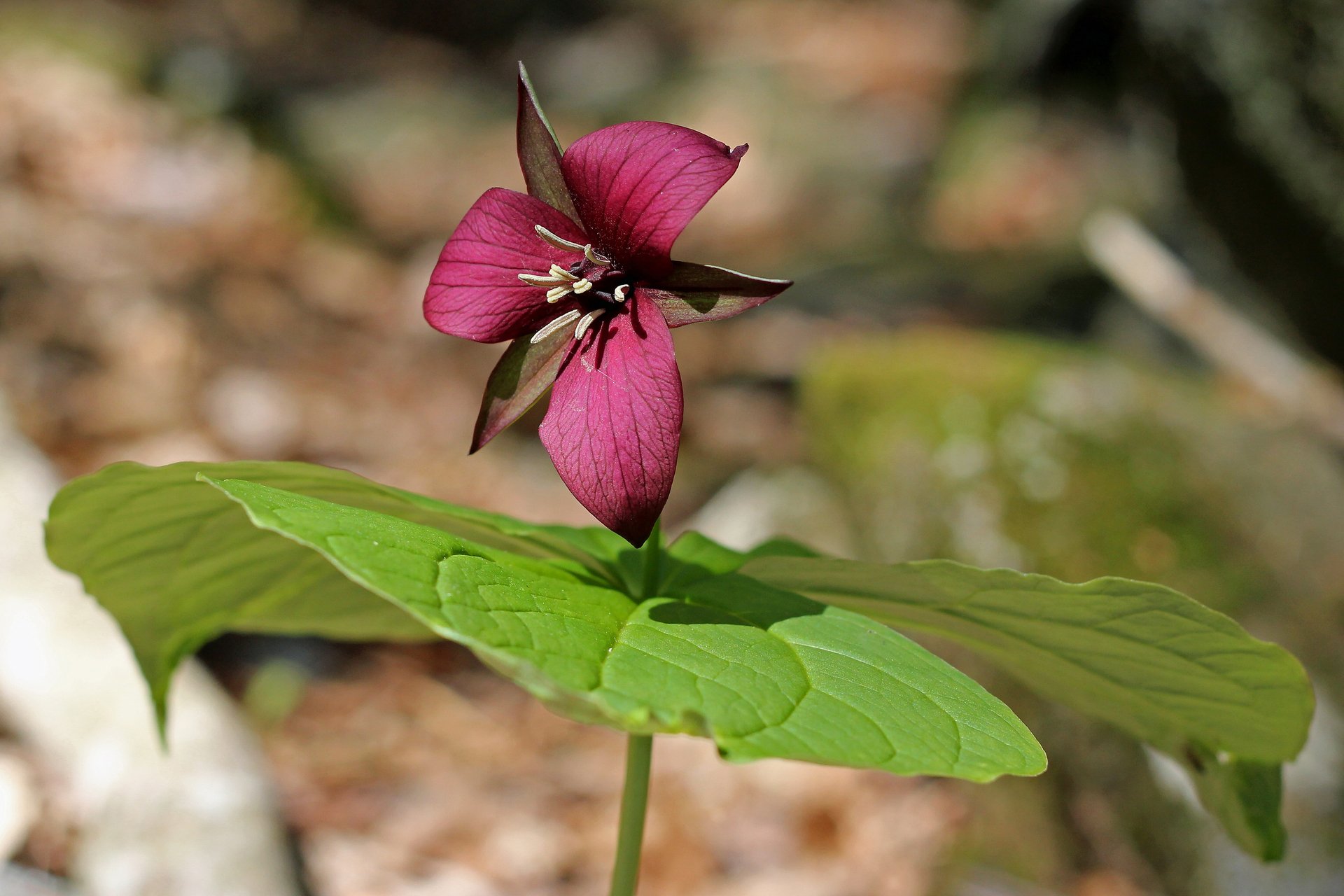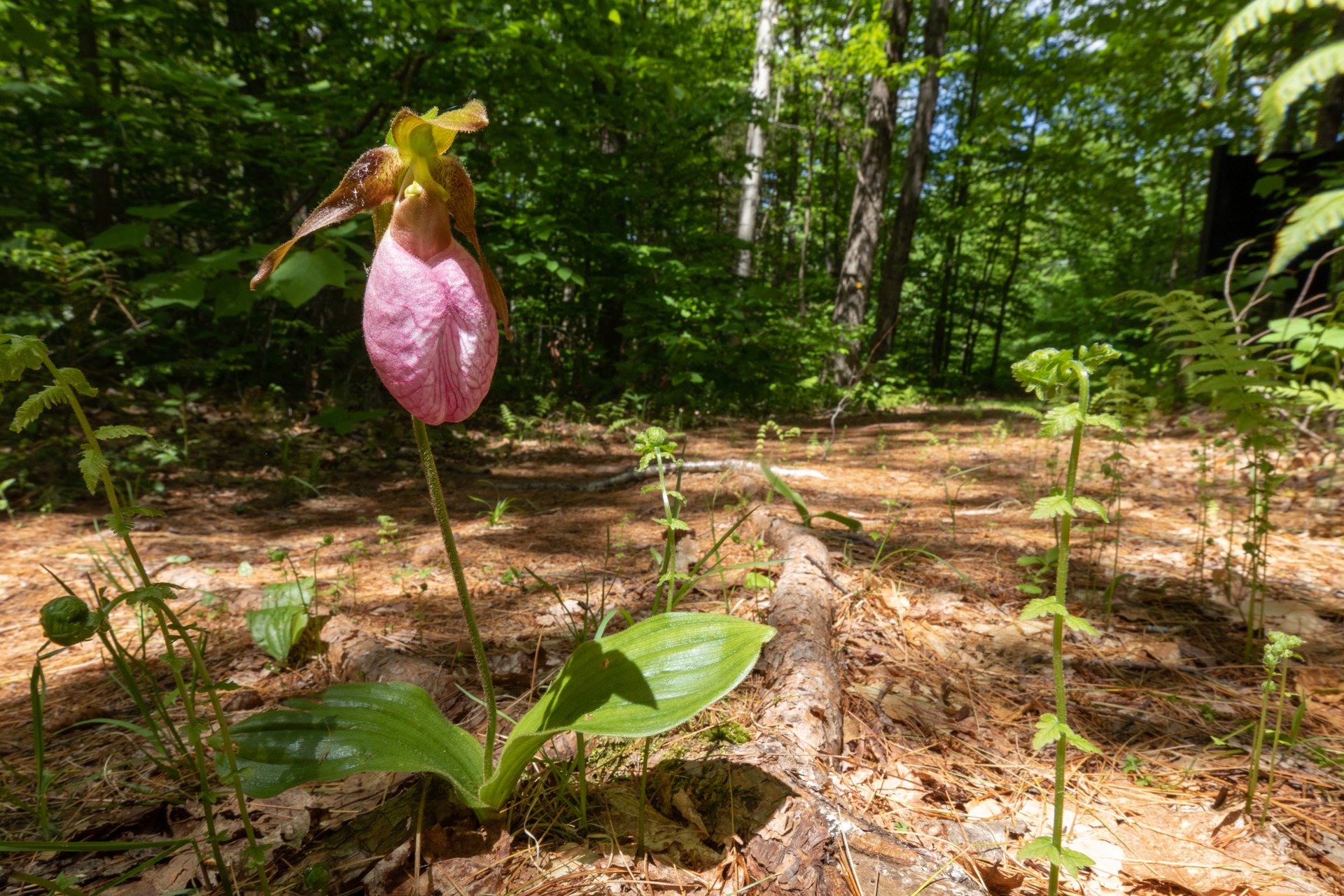Take a Walk on the Wildflower Side
April 01, 2017
As winter gradually recedes and the weather begins to warm, nature greets the returning migratory songbirds with budding trees and the striking displays of delicate, new blossoms unfurling.
Welcome to spring wildflower season. To help you fully appreciate this brief, remarkable time of year, here are some tips for where to look, what to look for, and when to find all kinds of spectacular wildflowers. If you are new to identifying wildflowers, pick up a field guide and look up the varieties mentioned below before you head out.
Keep an Eye Out for Weather
The season typically begins in late April, but it can fluctuate by a week or two due to lingering snow cover, variations in elevation or temperature, or whether or not a particular slope faces the sun. To experience the full breadth of the season, take a walk every two weeks from the middle of April to early June.
Timing is Everything
The majority of spring wildflowers need to bloom, be pollinated, and store enough food for the following year—all before the leaves on neighboring trees have fully appeared. Some of the earliest species (and those needing the most direct sunlight) are known as spring ephemerals. These are plants that, after flowering, virtually disappear in a few short weeks.
If you want to catch a glimpse of Dutchman’s breeches, squirrel corn, spring beauty bloodroot, trout lily, and Canada violet, make sure you get out during the first week of May.
Some early flowering plants have thick, long-lasting leaves that you can see throughout the year. Look for trailing arbutus and early saxifrage on rocky ledges or dry sites. You’ll find hepatica (which can have white, pink, or blue flowers) and yellow violets on rich forest floors in May.
Make the Most of May Days
You’ll see the greatest diversity of spring wildflowers around the middle of May, with some ephemerals still remaining and mid-May flowers in their full glory, joined by a few late-May wildflowers that are just beginning to appear. Red trillium and marsh marigold are two of the most vibrant flowers at this time. You’ll find the bright-red, nodding flowers of wild columbine perched on rocky outcrops.
Keep an eye out, too, for the white flower spikes of miterwort and foamflower or the white raceme of baneberries. If you are in rich woods, look for the yellow-green flowers of blue cohosh. In wetlands, a careful search will reveal Jack-in-the-pulpit or swamp saxifrage.
Lillies Can Be Late to the Party
During the weeks surrounding Memorial Day, a number of lily-family members appear, many of which are quite common and can be found in any woodland. While you won’t see Easter lily-sized flowers, you’ll find plants like the tiny Canada mayflower covering the forest floor, along with other family members like painted trillium, Solomon’s seal, false Solomon’s seal, sessile bellwort, and Indian cucumber.
Some orchids also appear in late spring, including pink lady’s slipper (much more common than people realize), which grows beneath pines and oaks. Finally, if you are lucky, you may stumble across yellow lady’s slipper or showy orchid in pockets of rich woodlands.
Start Your Search
In eastern and central Massachusetts, the forests are predominantly acidic, so you can find similar spring wildflowers in nearly every forest. For even greater wildflower diversity, travel west across the Connecticut Valley toward the Berkshires, where the bedrock and soils become less acidic and the forests richer.
When taken by the beauty of a particularly exquisite wildflower, it may be tempting to pick just one to take as a memento. But wildflowers are a crucial foundation of their ecosystems, and many creatures, particularly pollinators, depend on them for survival. Additionally, many species of wildflowers are quite rare and fragile.
So, admire them to your heart’s content, but please don't pluck.
This article was featured in the Spring 2017 issue of Explore, Mass Audubon's quarterly member newsletter.
Upcoming Programs on Wildflowers
See MoreDiscovering Nature for Preschoolers
-
Broad Meadow Brook Conservation Center and Wildlife Sanctuary, Worcester
-
5 classes starting
Tuesday, April 23
9:30am-12:00pm
Age 4 - 5
Nature Walks for Adults
-
Wachusett Meadow Wildlife Sanctuary, Princeton
-
Wednesday, April 24
10:00am-12:00pm
Adults
All Family Field Trip: Nature's Builders
-
Joppa Flats Education Center, Newburyport
-
Thursday, April 25
10:00am-12:00pm
Families - children 4 - 11 years
Stay Connected
Don't miss a beat on all the ways you can get outdoors, celebrate nature, and get involved.





